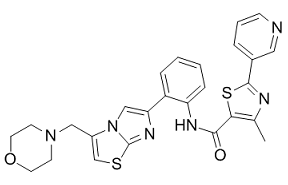Antibiotic resistance traits and their transferability by conjugation also corroborated the presence of this mobile genetic element. Interestingly, Double-MismatchAmplification Mutation Assay showed the presence of classical, El Tor as well as Haitian ctxB variants in these isolates. Mutations in topoisomerase genes gyrA and parC governed the quinolone resistance phenotype in these isolates. With the dismal scenario of an alarming increase in the drug resistance of various infectious pathogens, continuous surveillance becomes imperative to understand the pathogens and their changing drug resistance profiles for an effective treatment. The present study was undertaken to determine the drug resistance profiles of one hundred and nineteen clinical isolates of V. cholerae O1 El Tor Ogawa from Kolkata, in 2009, and unravel some of the mechanisms that could be responsible for their observed drug resistance phenotypes. Presence of SXT element in majority of the isolates and their resistance to drugs characteristic of SXT element clearly showed the circulation of this genetic factor in the clinical isolates of V. cholerae. Sequences of topoisomerases from the representative isolates in this Indian population indicated the presence of a mutation in GyrA and another mutation in ParC. Though the mutation Ser83R Ileu in GyrA accounted for the observed nalidixic acid resistance in 100% of the isolates, the effect of the other mutation in ParC could not be explained as the isolates were not resistant to fluoroquinolones like ciprofloxacin and norfloxacin for which this mutation is known to contribute. Resistance profile of these isolates was very similar to the one described earlier for V. cholerae strains circulating in India from the year 2004�C2007 and also in Haiti. A recent report has described DMAMAPCR as an effective tool to study the emergence and dissemination of Haitian ctxB allele in India. Our study using the DMAMAPCR also established that the 2009 V. cholerae isolates had 46.2% of the Haitian ctxB allele corresponding to genotype 7, a new variant of ctxB that has been reported from Orissa, India, in 2007 and later in Kolkata from 2006�C2011. Though there are few reports describing different number of V. cholerae clinical isolates from India in recent years, our report adds another dimension to these finding from India and abroad to once again show that a large number of the Indian strains as recent as 2009 had similar characteristics of the strain that caused Haiti outbreak. It is established now that UN peacekeepers from Nepal were the actual carriers of the pathogen in Haiti but such isolates have also been circulating in the Southeast Asian regions like India and Bangladesh since last few years. An earlier report had established the genetic relatedness of the ICEVchHAI 1, an ICE element from the strain that caused Haiti outbreak, with that of ICEVchInd5,  an ICE from an Indian isolate from Sevagram, India, in 1994. BLAST search of the sequence of SXT integrase in our study showed 99% identity with ICEVchHAI, ICEVchInd5, ICEVflInd1 and ICEVchBan5; all belonging to the same group 2 of SXT/R391 ICEs. Only 95% identity with ICEVchInd4 with origin in Kolkata and no relation/ identity was observed with the third group of ICEs containing the Matlab variant/ICEVchBan9. Persistence of this ICEVchInd5 element in India till 2005 has also been documented.
an ICE from an Indian isolate from Sevagram, India, in 1994. BLAST search of the sequence of SXT integrase in our study showed 99% identity with ICEVchHAI, ICEVchInd5, ICEVflInd1 and ICEVchBan5; all belonging to the same group 2 of SXT/R391 ICEs. Only 95% identity with ICEVchInd4 with origin in Kolkata and no relation/ identity was observed with the third group of ICEs containing the Matlab variant/ICEVchBan9. Persistence of this ICEVchInd5 element in India till 2005 has also been documented.
Is Intracellular PCB distribution was then investigated in mature primary adipocytes that contain large unilocular lipid droplets a new concept for you? Click http://www.inhibitorclinical.com/index.php/2019/02/23/av-delay-optimized-doppler-echocardiography-evaluating-aortic-velocity-time-integ/ for an explanation.